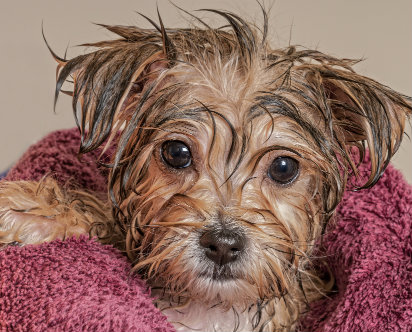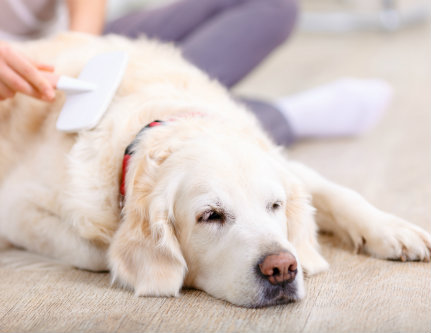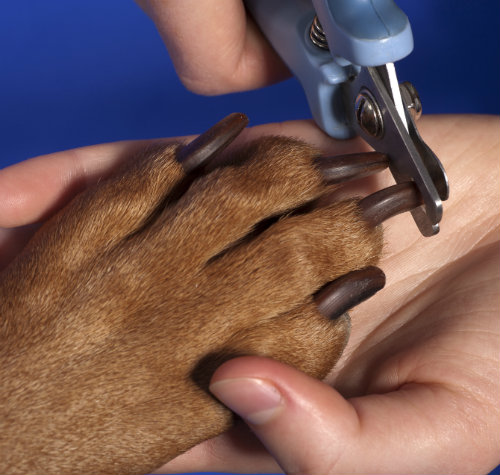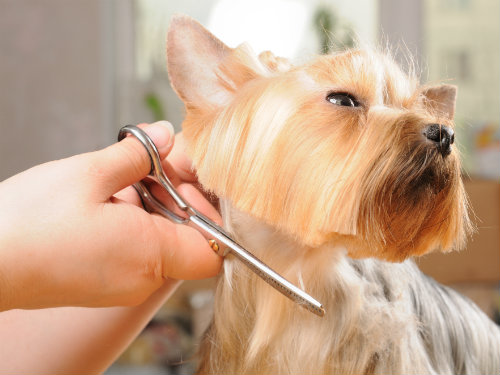There are plenty of simple ways to get your pooch looking its best. However, keeping your dog in check can be a pricey affair during its lifetime, so if like me you want to save the pennies and give dog grooming a go yourself, here are some useful techniques and tools you can use to do just that.
Bathing
It’s best to get your pooch completely wet so your shampoo lathers up over its whole body easily and reduces the chance of missing any spots.

Be careful with the head of your dog – hold the muzzle and point it downwards, spraying water above the head. This will ensure water doesn’t go into its nose and ears.
It’s easier to work on sections of your pet and move your dog around whilst in the bath so you can see what you’re doing rather than just hoping your pet is clean. I recommend using a good quality shampoo so it doesn’t irritate the skin.
Hair Brushing
You might think it’s as simple as buying a brush for your dog and giving it a once over every now and then.

But different types of coats require different tools and sometimes more frequent brushing. Long haired dogs benefit from daily brushing to prevent matting or tangling – you can use a medium comb or brush which has extra tools such as an undercoat rake for thick fur, a steel comb or a slicker.
For a short haired dog you can go for a couple of weeks without a brush, but most canines love having a good groom, and regular brushing of any dog will keep its coat shiny, soft and healthy.
Whatever brush you use, it should remove loose hair, which will help to distribute natural oils throughout the coat.
Nail clipping

Don’t be scared about this part of grooming – it’s vital to clip your dog’s nails to prevent them from curling under paws and twisting toes.
The best way to keep dogs nails short is to trim regularly (If you can hear a scratching or tapping sound on the ground when they walk, they’re too long).
Invest in a good quality pair of cutters that won’t blunt quickly. Dogs have a quick at the top of their nail which is where the blood vessels are.
To make sure you avoid this and to not hurt your dog, only take away a small amount of hard nail.
Dogs with lighter coloured nails are easier to cut as you can see the quick and where to stop.
Err on the side of caution with dark nails, clipping off only a small amount at a time. You can try using a grooming dremel tool which files down the nail instead of clippers if you’d prefer.
Clipping and trimming a coat

Clipping can be tricky for a novice to get started with, so it might pay to get a groomer to show you how it’s done so you can replicate in the future.
Alternatively, read up or watch a few YouTube videos on how to clip or trim your specific breed’s coat.
Make sure you have all of your tools ready around you on a table and a comfortable area set up for you and your dog.
The best place to start is to clip the dog's hair methodically from the top at the neck. Be sure to clip under ears and towards the chin. Do it confidently, making slow and sure movements which will reduce the chance of wobbly lines in the coat.
You can place the blade against the body and clip against the direction of hair growth, but don’t press too hard as it could nick the skin.
The length of hair will be shorter than the clipper blade if you go in the opposite direction, so a handy tip is to have a test shave on the under side of the pooch and adjust your tool accordingly.
Don’t forget to be extra careful around those sensitive parts such as the bum, eyes and ears; you could use a pair of trimming scissors instead to help avoid any accidents.
